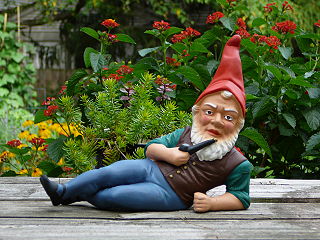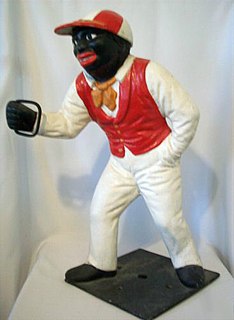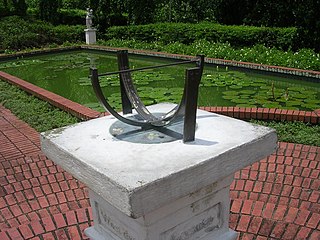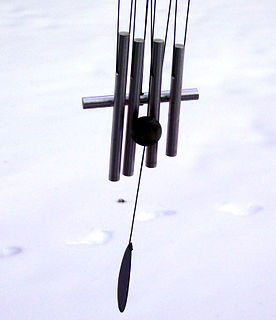 W
WA garden ornament is an item used for garden, landscape, and park enhancement and decoration. Garden ornaments include:bird baths bird feeders birdhouses columns – cast stone flower box window box folly fountains jardiniere kugel fountain garden furniture gazing spheres hanging baskets holiday – seasonal ornaments and decorations landscape lighting – decorative fixtures lawn ornaments bathtub madonnas concrete geese garden gnomes lawn jockeys plastic pink flamingos moon bridge – small ornament versions outdoor fireplace outdoor sculpture found objects such as recycled bowling balls, toilet planters, antique farm equipment kinetic sculpture masks obelisks renewable energy sculpture pagoda – small versions pedestals – e.g. terracotta, cast stone pond – rocks and boulders with basins pots urns ceramic art vases rain chains reflecting pools – small/portable types sundials topiary specimens waterfalls – small prefabricated type weathervanes wind chimes
 W
WA bathtub Madonna is an artificial grotto typically framing a Roman Catholic religious figure.
 W
WA bird bath is an artificial puddle or small shallow pond, created with a water-filled basin, in which birds may drink, bathe, and cool themselves. A bird bath can be a garden ornament, small reflecting pool, outdoor sculpture, and part of creating a vital wildlife garden.
 W
WThe concrete goose, also known as a porch goose or lawn goose, is a popular lawn ornament in the United States. Concrete geese reached the peak of their popularity in the 1980s, but are still common in the Midwestern United States.
 W
WA fairy door is a miniature door, usually set into the base of a tree, behind which may be small spaces where people can leave notes, wishes, or gifts for the "fairies".
 W
WGarden gnomes are lawn ornament figurines of small humanoid creatures known as gnomes. Traditionally, the figurines depict male dwarfs wearing red pointy hats. Typically, gnomes stand between one and two feet. A recent trend has introduced miniature gnomes of only a few inches in height. Originating as a decoration for the wealthy in Europe, garden gnomes are now prevalent in gardens and lawns throughout the western world, among all social classes, and often regarded as kitsch.
 W
WGarden hermits or ornamental hermits were hermits encouraged to live in purpose-built hermitages, follies, grottoes, or rockeries on the estates of wealthy landowners, primarily during the 18th century. Such hermits would be encouraged to dress like druids and remain permanently on site, where they could be fed, cared for, and consulted for advice, or viewed for entertainment.
 W
WGongshi, also known as scholar's rocks, are naturally occurring or shaped rocks which are traditionally appreciated by Chinese scholars.
 W
WJardinière is a French word, from the feminine form of "gardener". In English it means a decorative flower box or "planter", a receptacle or a stand upon which, or into which, plants may be placed, usually indoors. The French themselves mostly refer to tabletop "planter" versions of such receptacles as cachepots ("hide-pots"). The French tend to use jardinière for larger outdoor containers for plants, and for raised beds in gardens in some sort of isolated frame, such as a stone wall, especially growing vegetables and herbs.
 W
WA kugel fountain is a water feature or sculpture where a sphere sits in a fitted hollow in a pedestal, and is supported by aquaplaning on a thin film of water. Pressurized water flows between the sphere and socket, creating a mechanical hydrostatic bearing that is nearly frictionless. The sphere can weigh thousands of kilograms, but the efficient bearing allows it to be spun by the force of a hand. The sphere does not float, being denser than water; it is often made from granite. The hydraulics of the fountain can be controlled so that the axis of rotation of the sphere changes continually. Ring sculptures that rotate on an axis are also built.
 W
WA lawn jockey is a small statue of a man in jockey clothes, intended to be placed in front yards as hitching posts, similar to those of footmen bearing lanterns near entrances and gnomes in gardens.
 W
WLawn ornaments are decorative objects placed in the grassy area of a property.
 W
WPink plastic flamingos are one of the most famous lawn ornaments in the United States, along with the garden gnome.
 W
WA puteal is a classical wellhead built around a water well's access opening.
 W
WA suikinkutsu is a type of Japanese garden ornament and music device. It consists of an upside down buried pot with a hole at the top. Water drips through the hole at the top onto a small pool of water inside of the pot, creating a pleasant splashing sound that rings inside of the pot similar to a bell or Japanese zither, called a koto. It is usually built next to a traditional Japanese stone basin called chōzubachi, part of a tsukubai for washing hands before the Japanese tea ceremony.
 W
WA sundial is a device that tells the time of day when there is sunlight by the apparent position of the Sun in the sky. In the narrowest sense of the word, it consists of a flat plate and a gnomon, which casts a shadow onto the dial. As the Sun appears to move across the sky, the shadow aligns with different hour-lines, which are marked on the dial to indicate the time of day. The style is the time-telling edge of the gnomon, though a single point or nodus may be used. The gnomon casts a broad shadow; the shadow of the style shows the time. The gnomon may be a rod, wire, or elaborately decorated metal casting. The style must be parallel to the axis of the Earth's rotation for the sundial to be accurate throughout the year. The style's angle from horizontal is equal to the sundial's geographical latitude.
 W
WIn Japan, a tōrō is a traditional lantern made of stone, wood, or metal. Like many other elements of Japanese traditional architecture, it originated in China; where they can still be found in Buddhist temples and Chinese gardens. They are not as common in Korea as they are in China or Japan. In Japan, tōrō were originally used only in Buddhist temples, where they lined and illuminated paths. Lit lanterns were then considered an offering to Buddha. Their use in Shinto shrines and also private homes started during the Heian period (794–1185).
 W
WA whirligig is an object that spins or whirls, or has at least one part that spins or whirls. A whirligig can also be a pinwheel, buzzer, comic weather-vane, gee-haw, spinner, whirlygig, whirlijig, whirlyjig, whirlybird, or simply a whirly. Whirligigs are most commonly powered by the wind but can be hand, friction, or motor powered. They can be used as a kinetic garden ornament. They can also be designed to transmit sound and vibration into the ground to repel burrowing rodents in yards.
 W
WWind chimes are a type of percussion instrument constructed from suspended tubes, rods, bells or other objects that are often made of metal or wood. The tubes or rods are suspended along with some type of weight or surface which the tubes or rods can strike when they or another wind-catching surface are blown by the natural movement of air outside. They are usually hung outside of a building or residence as a visual and aural garden ornament. Since the percussion instruments are struck according to the random effects of the wind blowing the chimes, wind chimes have been considered an example of chance-based music. The tubes or rods may sound either indistinct pitches, or fairly distinct pitches. Wind chimes that sound fairly distinct pitches can, through the chance movement of air, create simple songs or broken chords.
 W
WA wishing well is a term from European folklore to describe wells where it was thought that any spoken wish would be granted. The idea that a wish would be granted came from the notion that water housed deities or had been placed there as a gift from the gods. This practice is thought to have arisen because water is a source of life, and was often a scarce commodity.
 W
WA yard globe, also known as a garden globe, gazing ball, lawn ball, garden ball, gazing globe, mirror ball, chrome ball, or orb, is a mirrored sphere typically displayed atop a conical ceramic or wrought iron stand, and sometimes the grass, as a lawn ornament. Sizes ranges from 1 in (25 mm) up to 10 m (33 ft) in diameter, with the most popular gazing ball being 12 in (300 mm). Gazing balls were glass but can now be stainless steel, acrylic, ceramic, or stained glass.